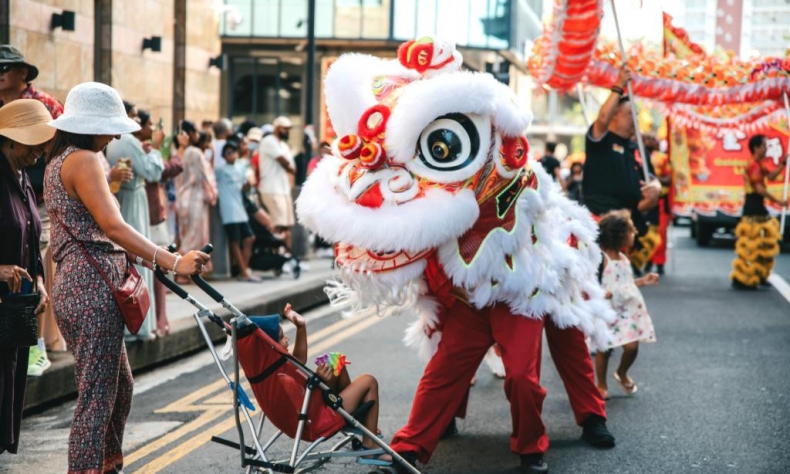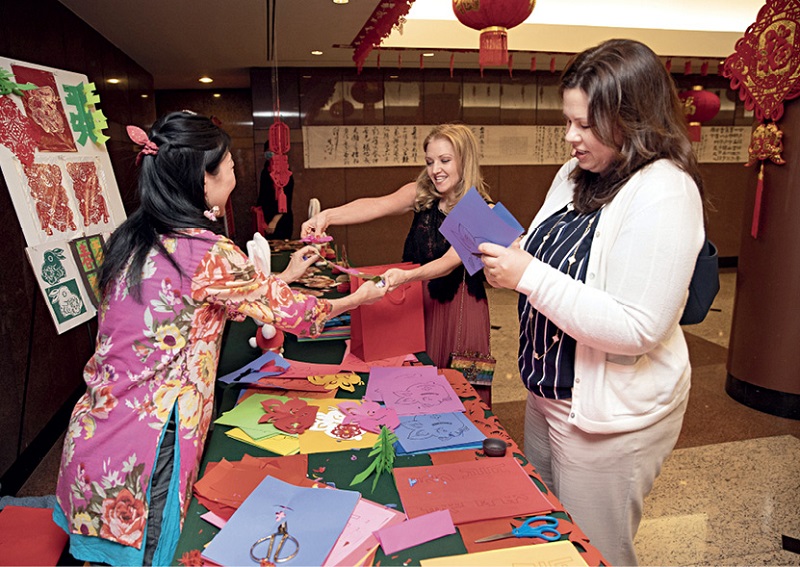Chinese New Year: A Celebration of Culture and Unity

The Chinese New Year is rising as an important occasion for vibrant and meaningful celebration that unites people, fosters cultural understanding, and contributes to the global community’s richness.
The Chinese New Year, also known as the Spring Festival, is a time-honored social and cultural tradition that has been celebrated for thousands of years. It is a festival that not only marks the inception of a new year in Chinese lunar calendar, but also acts as a symbolic bridge to connect individuals from different cultures and backgrounds.
The United Nations, an organization that embodies global unity, recognizes the importance of the Chinese New Year and has added it to its list of optional holidays. This allows staff at the UN headquarters and its offices around the world to observe and participate in the festivities associated with the festival. The celebrations encompass cultural performances, exhibitions, and food festivals that showcase the rich and diverse Chinese culture.
Global observance at the United Nations
For the staff at UNESCO hailing from different cultural backgrounds, the Chinese New Year provides a distinctive opportunity to immerse themselves in a different culture. Many actively engage in local celebrations, attending parades, and participating in communal feasts that are hallmark features of the festival. Homes are adorned in red for good luck, and children receive money in vibrant red envelopes from their senior family members and relatives. Some even partake in the traditional lion dance, a lively spectacle that is often the highlight of the festivities.
The Chinese New Year is a time of joy and renewal. It’s a time when families come together to celebrate, to share meals, and to wish each other prosperity and good fortune for the coming year. The lion dance, with its colorful costumes and energetic movements, is a captivating visual feast, which has been loved by many people.
The Chinese New Year is more than just a cultural celebration; it’s a testament to the diversity and unity of our global community. It’s a time when people of all backgrounds come together to celebrate a tradition that, while rooted in the Chinese culture, has found a home in communities around the world. For the UN, an organization dedicated to promoting peace, unity, and cultural understanding, the Chinese New Year serves as a reminder of the rich tapestry of cultures that make up our world.

Celebrations around the world
Chinese New Year celebrations have taken root in various parts of the world, each with their own unique flavor.
With its vast land, people in different regions of Chinese mainland celebrate the Lunar New Year with different iconic activities. In Beijing, the capital of the country, the Spring Festival celebrations blend ancient traditions with modern festivities. The city is adorned with vibrant decorations; traditional activities and ceremonies in parks like the Temple of Heaven give consideration to needs of both locals and tourists. In Quanzhou, southeast China’s Fujian Province, a city with rich historical heritage, traditional rituals and parades intertwine with the local customs, creating a festive atmosphere that reflects local cultural identity. The city’s ancient temples and maritime culture contribute to the distinctive celebration. In northwest China’s Gansu Province, the diverse ethnic groups contribute to a vibrant celebration, marked by colorful processions, local performances, and unique culinary delights that showcase Gansu’s cultural richness. Hainan, an island province in southern China, offers a tropical twist to the Chinese New Year festivities. Amidst palm-fringed beaches, locals and visitors come together to celebrate with beachside events. Traditional performances, and local delicacies, create a memorable fusion of island life and cultural heritage.
In Hong Kong and Macao, China’s two Special Administrative Regions, the Spring Festival maintains its traditional significance, with people enjoying three to five days off work. After the reunion dinner on Chinese New Year’s Eve, families gather at the flower market to purchase symbols of good fortune, such as peach blossoms, daffodils, or cumquats.
In Singapore, about 70 percent of local populations are composed of Chinese or Chinese-Singapore citizens. The ways of observing the festival change a bit here, but most traditions are kept.
In Paris, on January 18, 2023, China’s permanent delegation to the United Nations Educational, Scientific and Cultural Organization (UNESCO) held a 2023 Chinese New Year reception at the organization’s headquarters. This was the first time that China held a Chinese New Year reception at UNESCO headquarters since the outbreak of the COVID-19 pandemic. Firmin Edouard Matoko, assistant director-general of the Africa Department of UNESCO, attended the reception, extending his New Year wishes. More than 300 delegates from various countries participated in the event. While enjoying Chinese delicacies, they watched a live performance of Chinese folksongs.
In conclusion, the Chinese New Year is rising as an important occasion for vibrant and meaningful celebration that unites people, fosters cultural understanding, and contributes to the global community’s richness. Whether participating in a lion dance, sharing a meal with family, or learning about the associated traditions and customs, the Chinese New Year provides a unique opportunity to celebrate diversity and promote unity on a global scale. 
The author is the director and representative of UNESCO Regional Office for East Asia.
 Facebook
Facebook
 Twitter
Twitter
 Linkedin
Linkedin
 Google +
Google +










